The much-anticipated Part Three of the Tonoharu trilogy is hot off the press, and it was worth the six-year-long wait. Written and illustrated by Lars Martinson, Tonoharu Part One, Part Two, and Part Three are the only graphic novels I’ve read that delve into the world of English teachers living abroad. Reading the trilogy was like spending real time as a gaikokujin in rural Japan.
The trilogy

The entire trilogy takes place over the course of one year, as we follow the main character, Dan Wells, an awkward 25-year-old English teacher who has just moved to the remote town of Tonoharu, Japan. Being the only American in a rural area an hour away from the nearest small city is a culture shock that Dan hasn’t anticipated. Over the course of the series we are right there with Dan as he struggles with issues that most new assistant language teachers will likely deal with to some degree: loneliness, making friends, fitting in, improving Japanese language ability, overcoming cultural barriers, and figuring out what’s next.
The three books could be thought of as exploring the three different phases an ALT might experience during their first year living abroad:
- Part One: loneliness and isolation
- Part Two: friendships (and, in Dan’s case, heartache too)
- Part Three: clarity and hope
"Reading Tonoharu… is like a virtual reality experience"
Lars Martinson, who started writing the series during his first year as an ALT in Fukuoka in 2003, has an interesting way of marking time through holidays and celebrations (a costume-less Halloween party at an eccentric expat’s house, a treeless Christmas that is celebrated with one piece of “Christmas cake,” the Spring Festival parade with hand-crafted floats). But Tonoharu isn’t about moving time or plot forward to propel a story from point A to point B. In fact, reading Tonoharu is more like being transported along with Dan to his mostly uncomfortable and lonely new life. Reading Tonoharu is more than just entertainment – it’s like a virtual reality experience.
To review only Tonoharu Part Three would be like reviewing only one image of a triptych, or the last third of a movie. Sure, you can read each part as a stand-alone book, but I highly recommend reading all three “parts” to get the most out of this three-course graphic feast. So let’s take a look at all three books, starting with Part One.
Tonoharu Part One (2008)
Tonoharu Part One spans only the first two months of Dan Wells’ life in Tonoharu. But wait, let’s back up. Before we meet Dan Wells, the story starts with a clever prologue that features an ALT who we don't see again in this book. (It’s clever because by the end of the third book we do see him again, we come full circle, and we close with some wonderful “aha!” moments.)

The ALT is full of angst, trying to figure out whether or not he should re-contract, so, in his head, he weighs the pros and cons:
Pros:
- High pay
- Low stress
- An abundance of free time
- Enthusiastic students
- Friends with a teacher
- Great food
- Spring Festival floats
- High-tech toilets
- Drunken reverie of teacher parties, “where the language barrier temporarily becomes a non-issue”
- No regrets
Cons:
- Isolation
- Too much idle time
- Limited to small talk because of bad Japanese
- Only non-Japanese resident
- “Never knowing what the hell is going on”
- Going stir crazy
With these pros and cons, Martinson perfectly sums up what I’m sure many first-year ALTs are considering when trying to decide whether or not to re-contract. But for this ALT, the list is also a great foreshadowing of what’s to come for Dan Wells.
And now for the central story, which brings us to Dan. We start with Dan getting a tour of his new apartment. The ALT he is replacing shows him the kitchen, the microwave, the rice cooker, the garbage that you have to sort into three groups. Right away, through facial expressions and body language, we notice that Dan is a low-energy, uncertain, semi-depressed kind of guy. Martinson is a master of getting demeanor across without words, or using words that don’t match the mood. “Looks good!” Dan says enthusiastically to his predecessor after the grand tour, but his hand-wringing, slouched posture, and small mouth tell us something different.
Before the predecessor leaves, he introduces Dan to another American ALT, Constance Miller, who is also brand new to Japan, replacing Dan’s predecessor’s friend. She lives a few towns away from Tonoharu. Constance is cute, self-assured, and barely gives Dan the time of day. Dan is immediately infatuated.
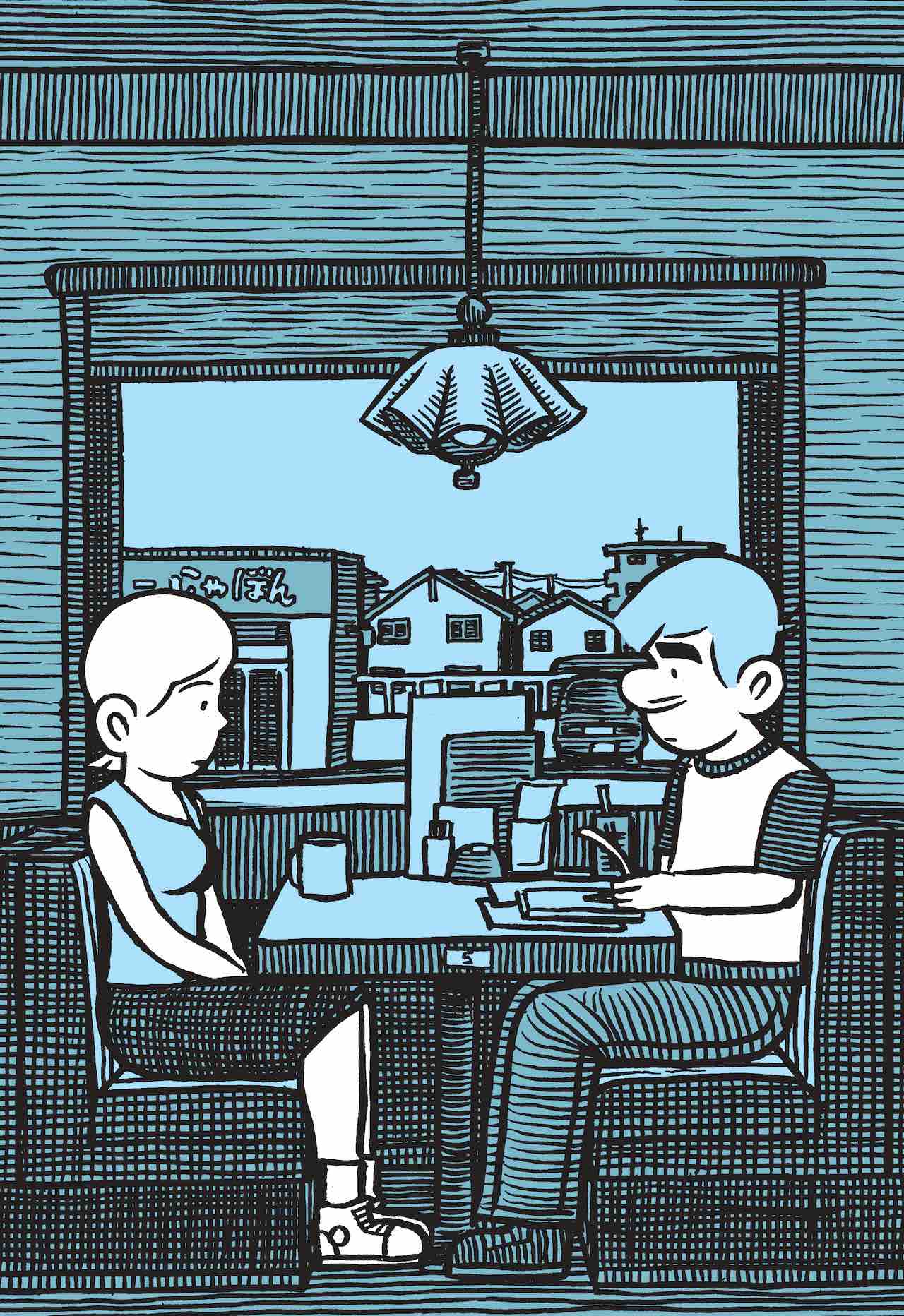
He comes up with his first excuse to call Constance during the first week of class. Dan has been asked to prepare for his “self-introduction,” or jikoshoukai – a speech that new teachers prepare to introduce themselves to their new classrooms. In Dan’s case, he has six classes, but can more or less use the same self-introduction for each. He practices in front of his bathroom mirror, but it isn’t enough. He calls Constance, and they meet at a café. He recites his self-introduction, a dull, rudimentary little speech that ends with, “…I like Japan very much. Thank you.”
“Wow, that’s pretty short!” she says. She tries to help spice up his speech and asks what he does in his free time. “I watch TV sometimes, or sleep.” Constance lends him a book that better explains self-introductions before she takes off.
For the next two months, while trying to think of reasons to call Constance, Dan muddles his way through life as a junior high assistant English teacher. It’s clear that author Martinson himself spent two years as an assistant English teacher by the insightful obstacles that Dan has to navigate, and as a former English teacher in Japan myself, it was fun to relive these awkward gaikokujin moments: having a hard time ordering something as simple as a cup of coffee, wondering how to sort the trash into various bags, being asked by a teacher in front of class to describe your impressions of World War II, trying to decipher what a product is at the grocery store, sitting in a restaurant alone for dinner …
"Martinson is a master of getting demeanor across without words, or using words that don’t match the mood."
In fact, Part One could be boiled down to two main threads that intertwine and lead Dan to further anguish and loneliness: his gaikokujin gawkiness and his constant desire to see Constance. When not utterly confused or blushing from embarrassment about some new cultural faux pas he’s made, all Dan can do is think of Constance. And after seeing Constance, he mutters to himself, repeating the stupid things he just said to her, adding more fuel to his anguish.
But with all of Dan’s angst and ineptness, the book is not depressing. Dan’s awkwardness and loneliness are just part of who he is, and these traits are exacerbated by the fact that he’s dealing with culture shock. In fact, the book in many parts is subtly humorous. At times I found myself chuckling out loud. Like when, after getting the rundown about the school from one of the teachers, he was asked if he had any questions, and his only question was asking why some guy at a desk was wearing a surgical mask.
The story ends on both a low and a hint of a high note. On the baritone side, Constance invites Dan to a Halloween party thrown by the eccentric Homaines – a wealthy, politically incorrect, British expat couple. But then Constance ditches Dan to be with a “Mister Darley.” On the hinted-at alto side (nothing ever hits a soprano pitch), after being dumped at the party, the book ends with one of the teachers, Keiko Mori, showing an interest in Dan, something that we see more of in the next book.
Tonoharu Part Two (2010)
First, let’s get something straight. Dan never really changes. At best, he’s nervous and uncertain. At his worst, he’s downright depressed. In Part Two, we open up with an unshaven Dan, going through the motions of his day, and returning to an unkempt, cluttered apartment. And then Constance calls.
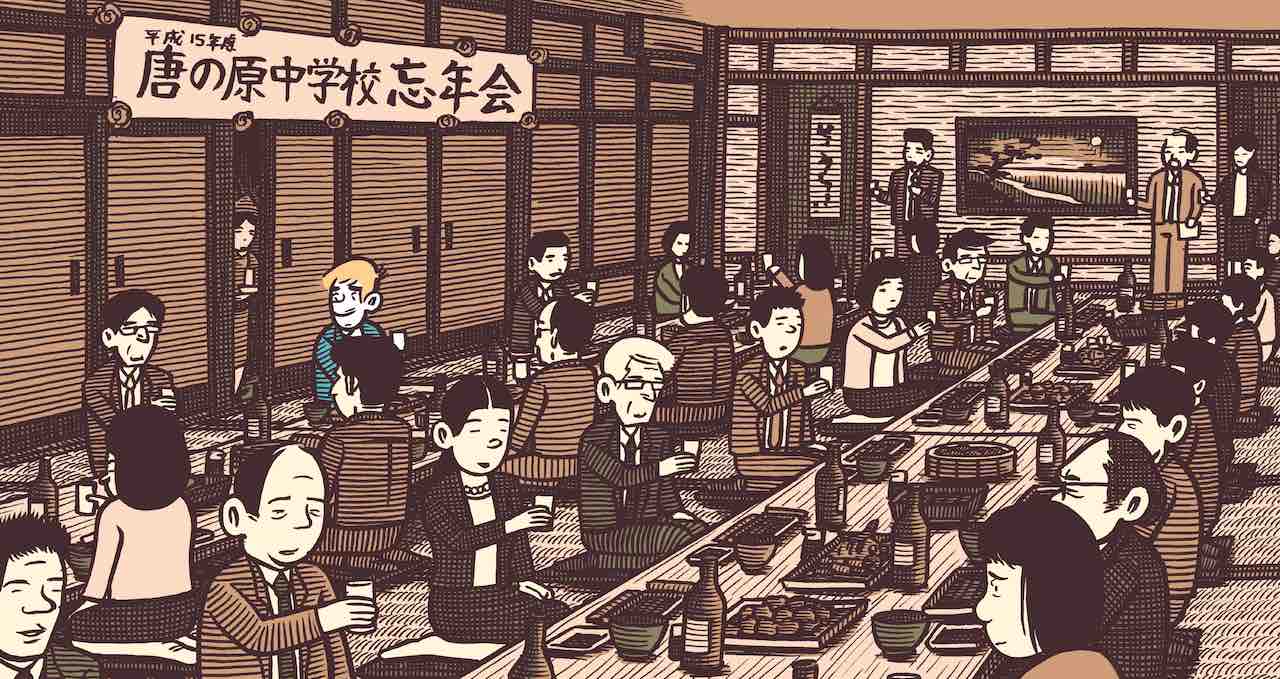
While the first book is almost entirely introspective and moves along at a leisurely pace, allowing us to take in the new sights and press right up into the self-conscious mood and atmosphere, Part Two is more dynamic in terms of pace and plot. We can step back and enjoy not only the scenery (which is a masterpiece, whether you’re looking at one panel or the book as a whole), but also a web of relationships at play. It even involves a love triangle. With more activity in this book than the last, I thought I’d briefly sum up the story of his blossoming (and thorny) social life in bullet points:
(Note: The following could be considered a spoiler alert. If you don’t want to know any details of the story, skip the bullets. But like being told about a painting as opposed to seeing a painting, giving away little plot points doesn’t ruin the immersive experience of reading Tonoharu. The brilliance of this series isn’t in who said or did what, but rather in Martinson’s astute portrayal of his characters and pitch-perfect tone of mood and setting – attributes that can only be fully appreciated by reading the books.)
Plot points:
- Constance calls Dan and asks to meet for dinner. She shows up with artist John Darley at her side.
- In a funk after leaving Constance and John, Dan bumps into Steve Lueger, a slick expat whom he met briefly in the first book. Steve is an accountant who hands out meishi, or business cards that say he’s an English teacher, because being an English teacher helps him “pick up chicks.” He gives Dan advice to “play the field.”
- Keiko Mori asks Dan to accompany her to the December “forget the year” party. He says yes. Dan “plays the field” and they become lovers.
- Dan still thinks of Constance.
- Dan continues his affair with Keiko.
- Dan bumps into the wealthy Mr. Homaine and finds out Constance has gone on a trip with “Mister Darley.”
- Dan obsessively imagines Constance with John. (“Let it go, you idiot,” he mumbles to himself.)
- Dan listens in bed as Keiko, hiding under the sheets, tells him her most inner darkest secret (which isn’t revealed to us until the third book).
- Steve continues to give Dan shady advice. “Christ, when I said you should have some fun, I meant with a stranger.”
And so on and so forth. Where Dan rarely had human contact in Part One, he’s quite the social butterfly in this book, with parties, time spent with Keiko, nights out with Steve, another dismal date with Constance and John Darley, and a new friendship with Mr. Sato, a popular teacher at school. But, as always, Dan never shakes his glum demeanor. At one point, Keiko asks Dan if he’s “sad for something.”
However, like in the first book, there’s a charm and sweetness about Dan that keeps him – and us – from falling into a deep depression. He seems to have a buried sense of humor about himself. One night, in bed with Keiko, he talks about living in Japan. Although he always has to guess which button to hit on the ATM before he finds “withdrawal,” and worries that one day he’ll hit the wrong key and delete his entire bank account, he admits that living in Japan “can actually be less stressful…Like in the States I feel just as out of place, but there I don’t have any excuse, y’know?…But in Japan everyone expects me to be weird and helpless, so it sort of takes the pressure off.”
In the end, Dan decides to take a four-week break to travel to Hiroshima and other parts of Japan, as well as spend time figuring things out at a meditation retreat. But first, he stops by the Spring Festival and bumps into Mr. Homaine, who reveals something about Constance that turns her relationship with “Mister Darley” into a mystery. Dan becomes more confused than ever as he waits for a train. He has only one word in the last panel as he sits on a bench at the train station: “Huh…”
Tonoharu Part Three (2016)
Great news, Tonoharu fans! After a six-year wait, Tonoharu Part Three is out! Only ten years behind schedule, but what the hey.
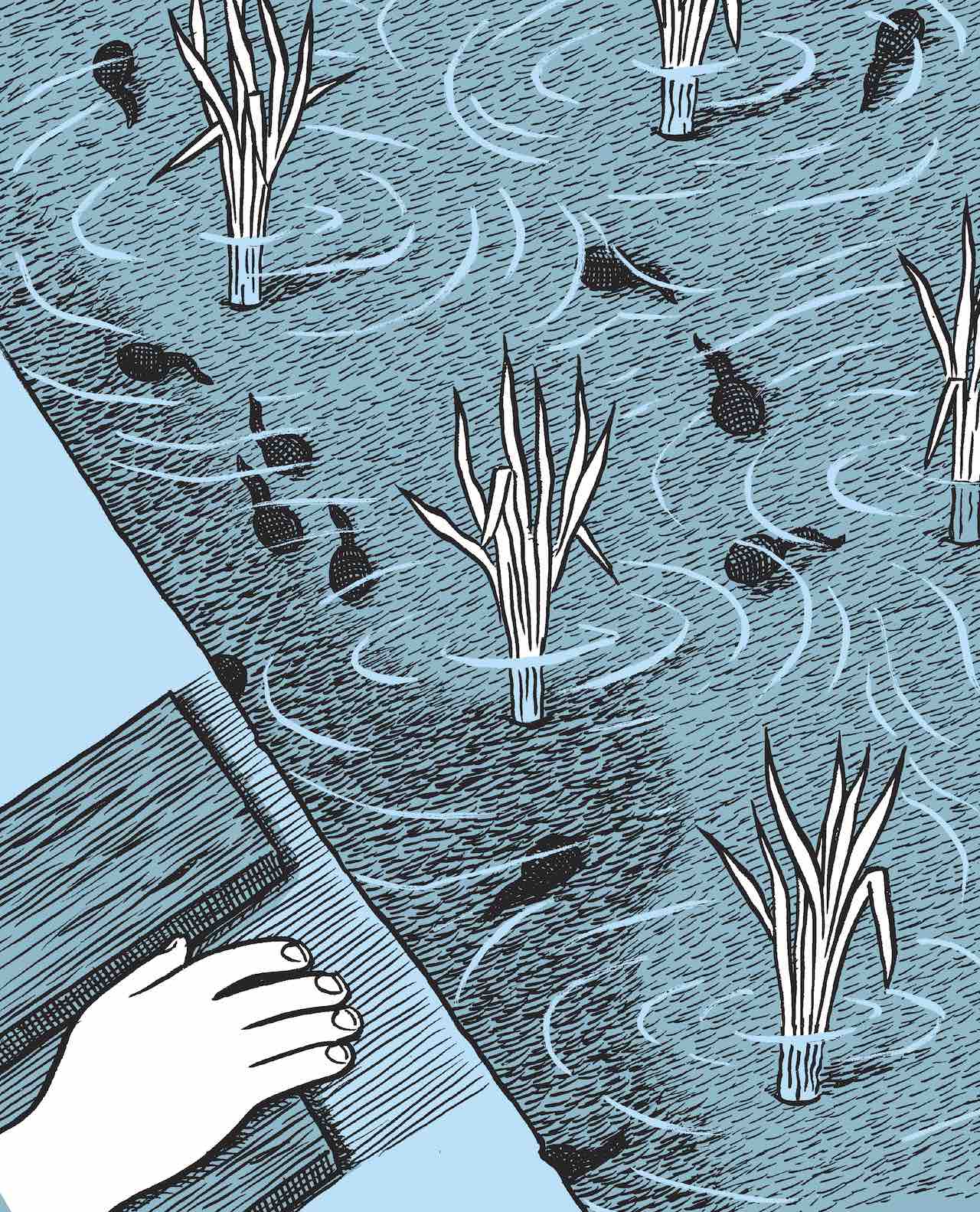
Originally, the entire trilogy was slated for release no later than 2006, but Martinson, a self-proclaimed “stubborn perfectionist at heart,” found his meticulous vision and style to be more laborious than he’d predicted. In fact, the reason Part Two was released only two years after the first, while Three took so much longer, is because he’d worked on Two at the same time as Part One, giving the second book a head start. What’s more, Part Three is longer at 208 pages, while Two ends at 160, and One at only 128. Once you’ve seen Tonoharu’s incredibly detailed art, however, its lag time all makes sense, and the end result is worth every minute of the wait.
Tonoharu Part Three continues where Two left off, with Dan Wells touring Japan. He ends his vacation at a “Buddhist silence camp,” recommended by his girlfriend Keiko in Part Two. Dan has a hard time sitting on the floor, cross-legged, for three days straight in complete silence. He wishes he wore his watch as he compares himself to the other meditators around him, complaining to himself about the hard tatami mats and thin-as-pancake pillows, wondering when it’ll be lunchtime, messing with the itchy tag on his shirt… and his mind wanders to his “girl troubles.” In his head he turns over the mysterious affairs surrounding the unobtainable Constance. And when he smells smoke from an incense burner, he ponders the phrase, “Like a bubble, or like smoke,” which we will hear again from him. It doesn’t at first make sense to the reader, until, towards the end, a secret of Keiko’s is revealed.
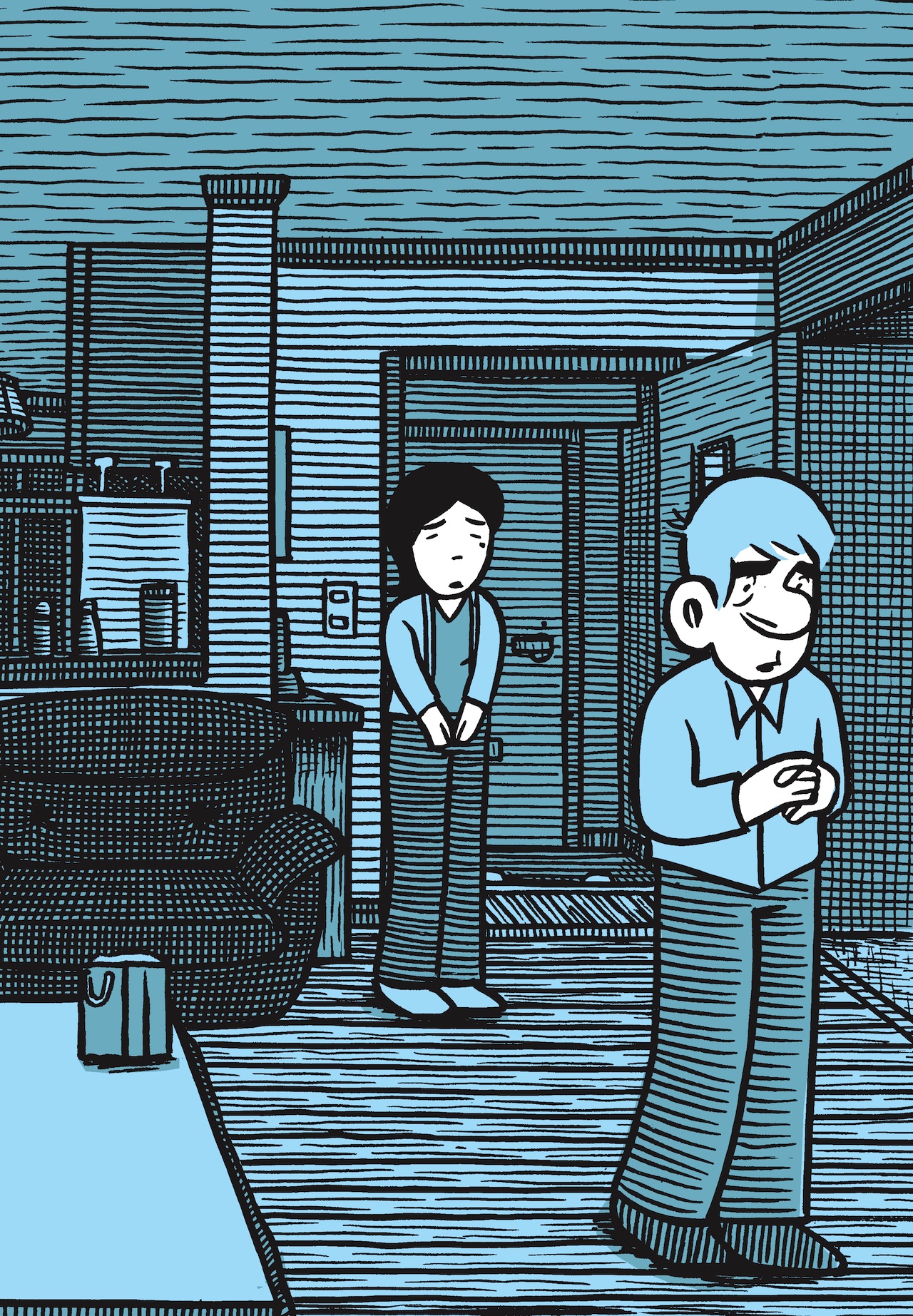
By the end of Dan’s retreat, his bunkmate asks, “How was it for you, man?” And Dan responds, “I mean it was really boring at first, but on the second day it helped me clear up some stuff. I’ve been having girl troubles recently, and…” The fellow meditator interrupts. “Girl troubles? I think you missed the point of all this, dude.”
Dan walks away from the retreat acting like a new man. He thinks he knows what to do about his love life, and after a pep talk with Mr. Sato, a teacher who he’s become friends with, he takes more chances and gets more involved at school. He becomes friends with some of his students, especially one girl who is picked on by some of the other students, and these friendships have some heartfelt moments. His friendship with Mr. Sato deepens. He even reluctantly takes up kendo, offering some humorous scenes at Dan’s painful expense.
But Dan also discovers some strange goings on that happened while he was away. And he discovers a shift in his feelings for Constance. Unlike the first two parts, I don’t feel like I can give away plot points so freely in this final book without ruining the experience. The plot has more at stake here, with an added twist of mystery and intrigue involving Mister Darley, as well as two deaths and a touching change in both Dan and the mysterious fellow we saw in Part One's prologue.
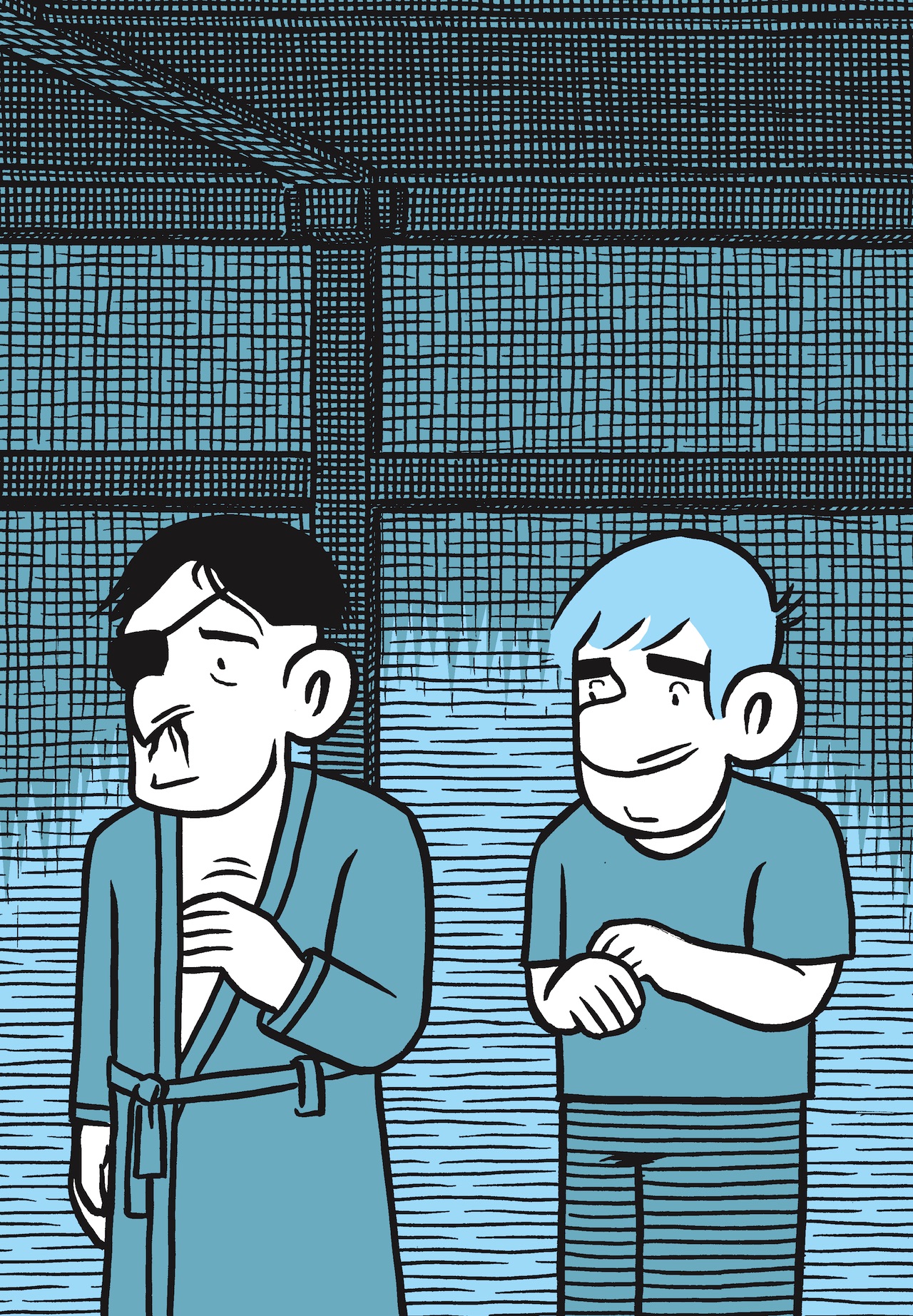
What I can say is that the last quarter of Part Three is cleverly divided into four appendices and an epilogue, each which focuses on one person, in reverse chronological order:
-
Appendix A jumps into the future with a look at a very unshaven Dan Wells, whose time as an ALT is in the past. He’s hoping to fix what he broke in the beginning of Part Three (sorry, hope I’m not spoiling anything here).
-
Appendix B steps closer to the present (or just a little past the end of the story), and we finally see who our Part One prologue ALT is.
-
Appendix C goes back to the middle of the story and uncovers a mystery surrounding John Darley (Constance’s sorta maybe boyfriend). We readers are privy to information that none of the characters will ever know.
-
Appendix D takes us even further back to Keiko in Part Two, where we finally hear what her heartbreaking secret to Dan was.
-
The epilogue ends the trilogy with our prolugue ALT, who, like in the prologue of the first book, is making a decision on whether to stay on as an ALT or to move on. His reflections and reasons for his final decision are moving.
After finishing Part Three, I reread the appendices backwards, from D to A, which was a fun way to put everything into better perspective. These last appendix and epilogue sections are unexpected surprises that bring the whole series home with some heartwarming moments of clarity and hope. I closed the last book with a satisfying sigh.
The Art of Tonoharu
When you first glance at the pages of Lars Martinson’s Tonoharu, the two-toned illustrations look clean and simple. But focus in, and suddenly you see an intricate and textured world with many little parts that can take three or more viewings before discovering them. Therefore, a review about Tonoharu isn’t complete without some words about the exquisite art.
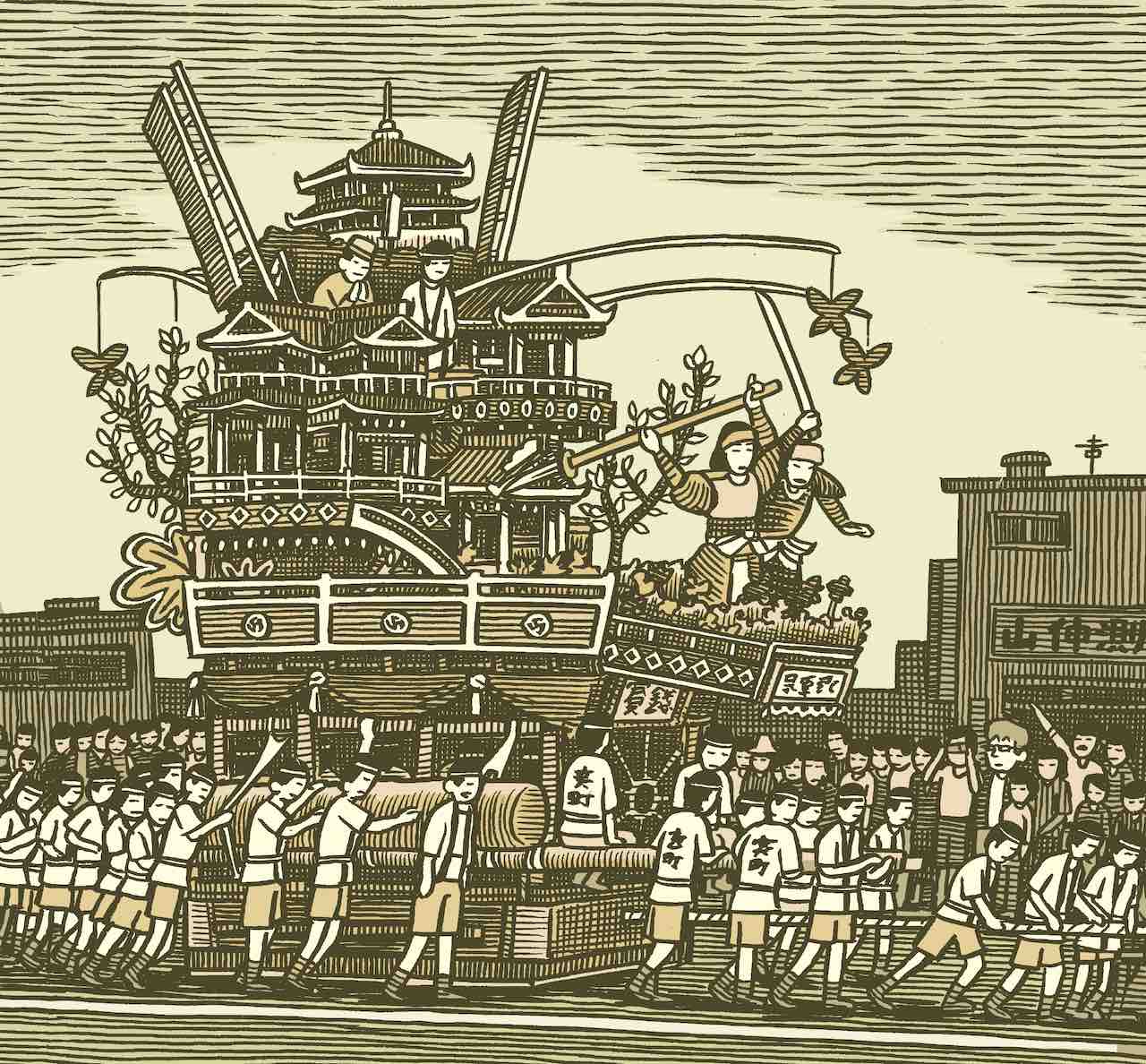
As I already mentioned, Tonoharu was a decade behind schedule and took a total of 13 years to finish. But this isn’t simply because Lars Martinson is a slow artist. Enamored by the etchings of 19th century books, Martinson wanted to emulate that style by applying hatching and crosshatching to his illustrations, which was much more time-consuming than he’d anticipated. Hatching and crosshatching are slow processes when done right, and from what I can see, Martinson hatched every panel. To further emulate 19th century illustrations, he also used a brush and dip pen rather than felt tip markers, another time-consuming endeavor. A dip pen is messy and Martinson had to dip it into ink every two seconds or so. Not a tool to be rushed.
But that’s not all. Martinson also created over 200 completely different, very detailed locations – interiors of markets, apartments, hallways with complex art on the walls, busy classrooms, cafés, offices, various city blocks, rural scenes, outdoor parties, parking lots, the Spring Festival, and tons more – each so intricate that for many you need a magnifying glass to catch all of the hard-to-spot items. His process was to find real-life locations he wanted to use, and then photograph them for reference.
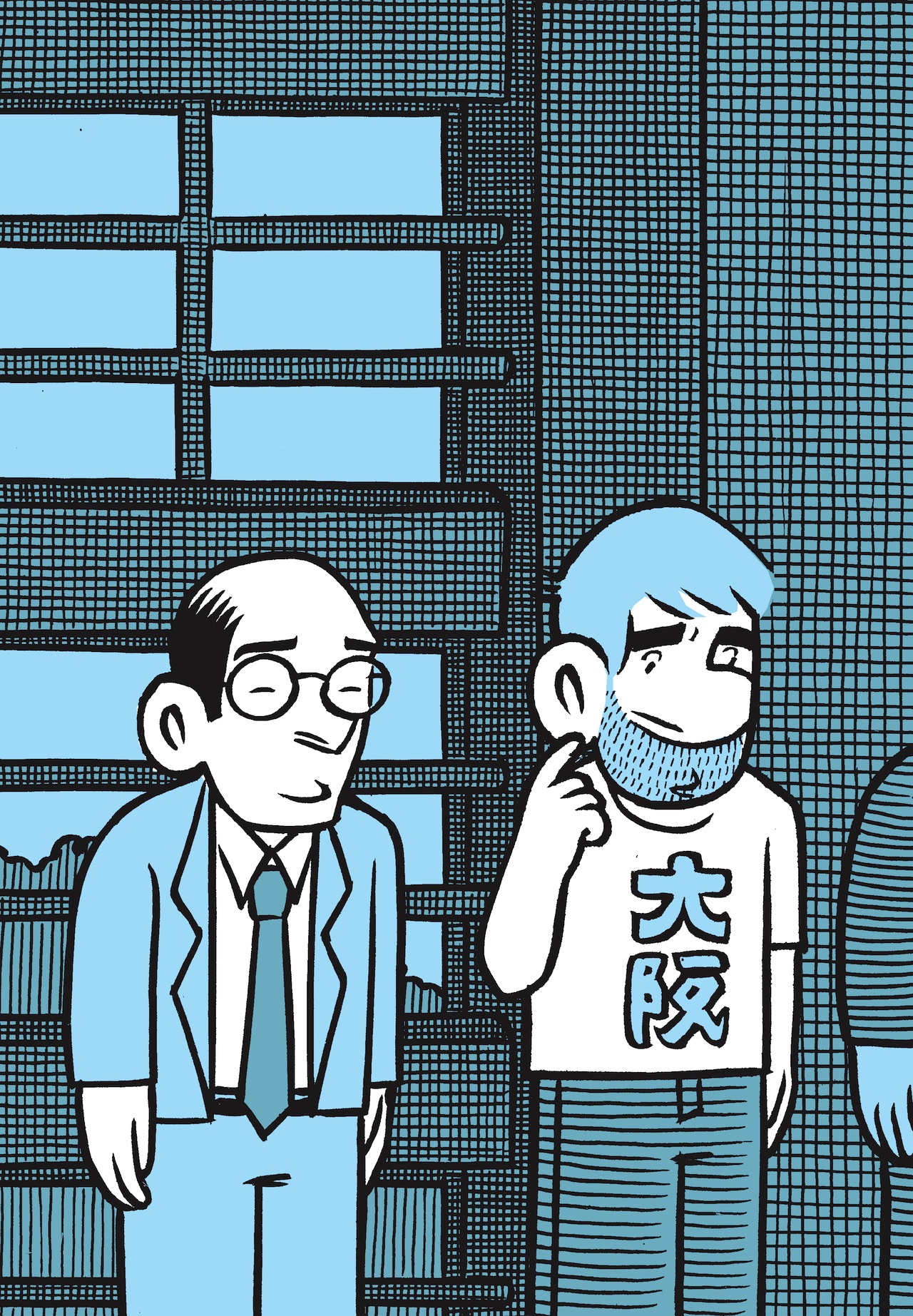
What’s most distinct about his art, though, is that as detailed and realistic as his backgrounds are, his characters are cartoonish and quite simple (although their clothes are often hatched). This helpful juxtaposition prevents the characters from getting lost in the background and gives great balance to what otherwise might be too chaotic.
Although inspired by Martinson’s real-life experience as an ALT, the series is a complete work of fiction. Martinson started on his Tonoharu three-volume venture when he was 25-years-old, and didn’t finish until he was 38. If he were to continue at that pace, we’d be fortunate to get just one more trilogy out of him. But Martinson has decided to change his approach to be more prolific. In fact, in the future he’d like to take just three months for each new project. I look forward to dedicating a bookshelf to more of his work.
I haven’t been this satisfied with a graphic novel since the days of Love and Rockets (although those were in comic book form). I’m not sure if my own experience as an English teacher in Japan influenced my reaction to the books, but Martinson hits the mark with perfect aim on both the magnificent graphics and the immersive storytelling. I wouldn’t be surprised if Tonoharu were turned into a movie by someone like indie filmmaker Terry Zwigoff. In fact, in my mind, it’s as if I’ve already seen Tonoharu on the big screen. Tonoharu is a graphic novel trilogy that anyone will enjoy, but if you’re a past, present, or future ALT in Japan, it’s a series that shouldn’t be missed.
